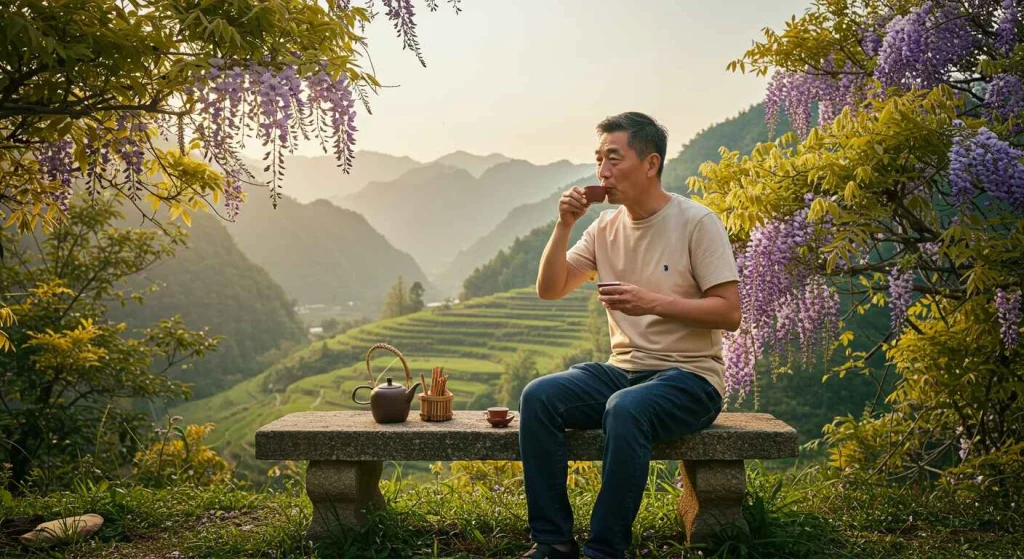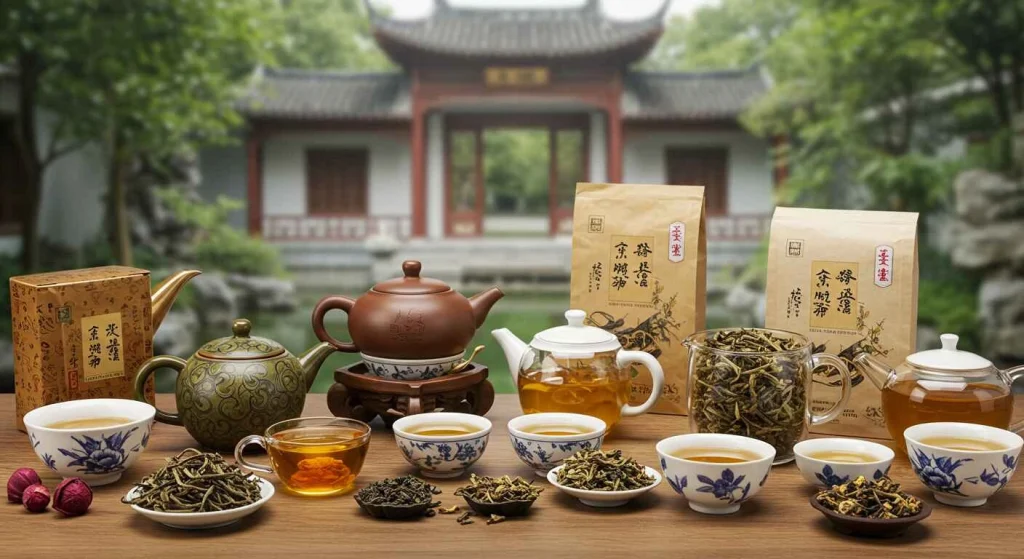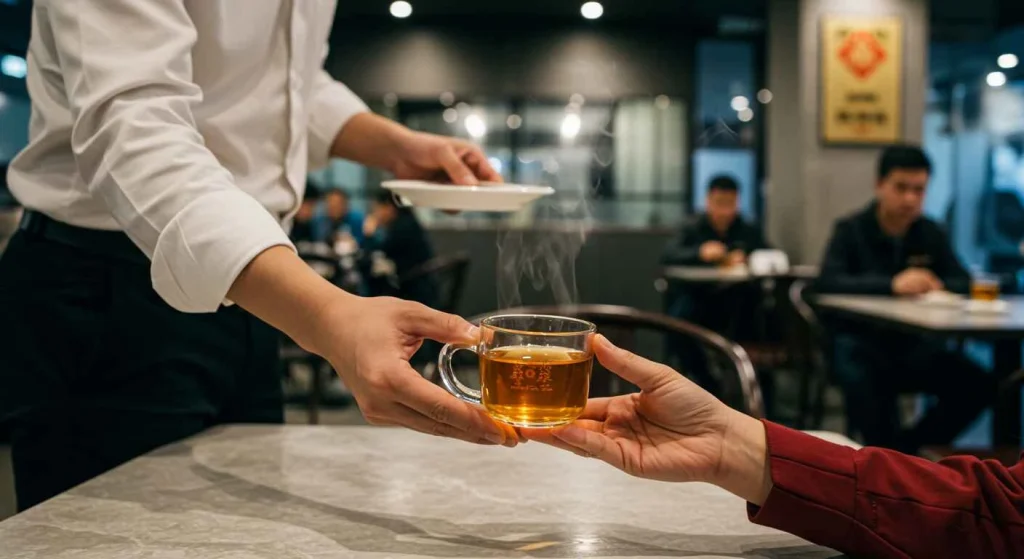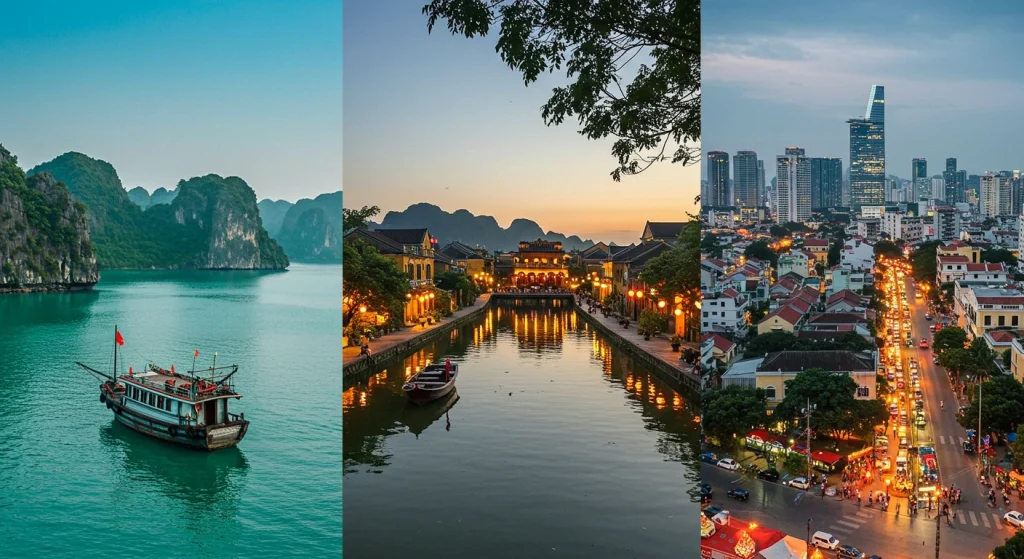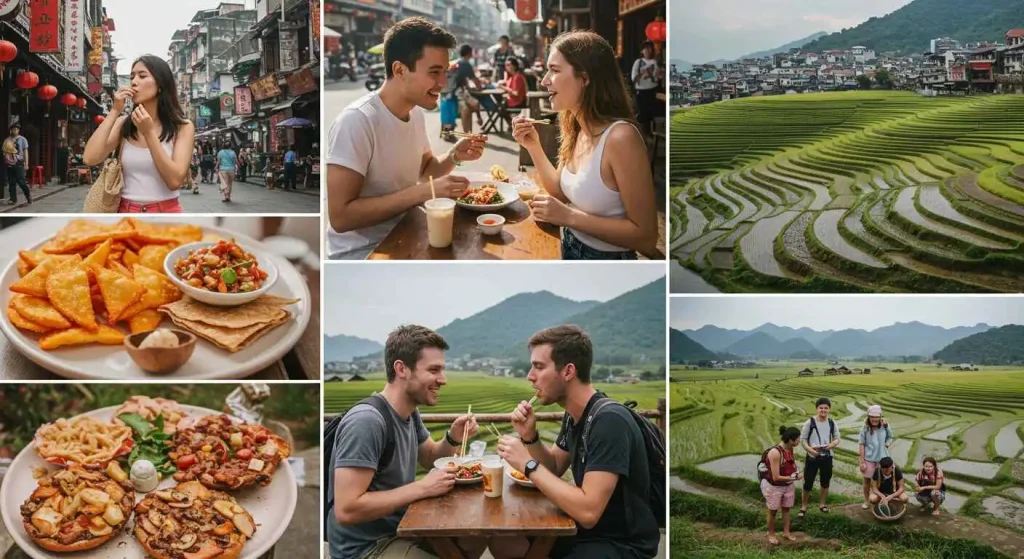Have you ever dined at a Chinese restaurant and wondered about the aromatic tea served alongside your meal? Tea is essential to Chinese dining culture, offering a refreshing and soothing complement to various dishes. But what exactly is the tea used in Chinese restaurants? Whether you’re a traveler exploring China or a food enthusiast, understanding the tea culture can enhance your culinary experience.
Chinese tea culture is one of the oldest in the world, dating back thousands of years. Tea is not just a beverage in China—it represents hospitality, tradition, and even health benefits. Many travelers who visit China or enjoy Chinese cuisine abroad find themselves drawn to the intricate world of Chinese tea. Knowing which tea is commonly served in Chinese restaurants can help deepen your appreciation and allow you to make more informed choices when ordering.
The Most Common Teas Served in Chinese Restaurants
Chinese restaurants typically serve a variety of teas, each with unique flavors and benefits. Here are some of the most commonly served teas:
1. Jasmine Tea – The Floral Favorite
Jasmine tea is one of the most popular teas in Chinese restaurants. It is a fragrant green or white tea infused with jasmine blossoms, giving it a light floral aroma. The subtle sweetness and refreshing taste make it a perfect companion for rich Chinese dishes. It is often served as a welcoming tea in many restaurants, setting the stage for a relaxed and enjoyable meal.
Jasmine tea is also well-loved for its calming properties. Many travelers who visit China will find it commonly served in tea houses, particularly in Beijing, where jasmine tea has deep cultural roots. If you’re looking for a tea that embodies elegance and tradition, this is an excellent choice.
2. Oolong Tea – The Balanced Brew
Oolong tea is a partially fermented tea that falls between green and black tea. It has a rich, smooth taste with a slightly roasted flavor. This tea is often served in dim sum restaurants as it helps cleanse the palate between bites. The semi-oxidized nature of oolong tea gives it a complex flavor profile that varies depending on where it is grown.
Travelers visiting the Fujian or Guangdong provinces can explore tea farms dedicated to producing world-renowned oolong teas, such as Tieguanyin and Da Hong Pao. These teas are often considered some of the finest in the world, and their subtle sweetness and deep aroma make them an excellent choice to pair with various Chinese dishes.
3. Pu-erh Tea – A Digestive Aid
Pu-erh tea is a fermented, earthy tea known for its deep, rich flavor. Many Chinese restaurants serve it after meals due to its digestive benefits. Pu-erh tea undergoes an aging process, much like fine wine, which enhances its flavor over time. Some aged pu-erh teas are highly prized and can be quite expensive.
For travelers, Yunnan Province is the ultimate destination to learn about pu-erh tea. Visiting local tea markets and farms in cities like Xishuangbanna allows you to experience this tea in its most authentic form. Whether you drink it for its bold flavor or its purported health benefits, pu-erh tea remains a staple in many traditional Chinese meals.
4. Green Tea – The Classic Choice
Green tea, such as Longjing (Dragon Well) from Hangzhou, is another common tea in Chinese restaurants. It has a light, grassy flavor and is packed with antioxidants. Green tea is often served in restaurants specializing in lighter dishes, such as steamed fish or vegetable-based meals.
Travelers who want to explore the origins of green tea should visit Hangzhou, where the famous West Lake Longjing tea is cultivated. Walking through the lush tea plantations and watching local farmers hand-pick the leaves is an unforgettable experience. For those who prefer a delicate and refreshing tea, green tea is always a great option.
5. Chrysanthemum Tea – The Herbal Infusion
Unlike traditional tea leaves, chrysanthemum tea is made from dried chrysanthemum flowers. It has a floral, slightly sweet taste and is often served in Cantonese restaurants. This caffeine-free tea is great for relaxation and cooling the body, making it especially popular during hot summer months.
Chrysanthemum tea is frequently paired with rock sugar or goji berries to enhance its sweetness. Travelers visiting southern China, particularly in Guangdong Province, will find this tea widely available in tea houses and herbal medicine shops. It is often recommended as a cooling drink that helps balance the body’s internal heat.
How Tea Enhances the Dining Experience
In Chinese culture, tea is more than just a drink—it enhances the flavors of the food and aids digestion. The warm tea helps cut through the oiliness of certain dishes, making each bite more enjoyable. This is why tea is often the first thing served at the table in Chinese restaurants.
Additionally, tea has social and ceremonial significance. In many traditional restaurants, tea is poured in a specific manner, and there are customs surrounding how to show gratitude when receiving a cup of tea. Understanding these small gestures can make your dining experience more immersive and enjoyable.
Experiencing Authentic Tea Culture While Traveling
If you love tea and travel, China offers incredible opportunities to experience authentic tea culture:
- Visit Tea Houses – Traditional tea houses in Beijing, Shanghai, and Chengdu offer a deep dive into tea preparation and tasting. You can learn about different brewing techniques and how tea is traditionally served.
- Explore Tea Plantations – Places like Hangzhou (for Longjing tea) and Yunnan (for Pu-erh tea) provide immersive tea experiences. Walking through vast tea fields and participating in tea-picking sessions can give you a firsthand appreciation of the labor and craftsmanship involved in tea production.
- Try a Tea Ceremony – Many cultural centers and tea houses host traditional Chinese tea ceremonies, where you can learn about the art of tea brewing. These ceremonies emphasize mindfulness and precision, turning tea drinking into a meditative experience.
Tips for Ordering Tea in Chinese Restaurants
If you’re dining in a Chinese restaurant and want to order tea like a pro, keep these tips in mind:
- Ask for the House Tea – Most restaurants serve a complimentary tea, often jasmine or oolong. If you’re unsure what to order, start with the house tea.
- Pair Tea with Your Meal – Oolong tea pairs well with dim sum, while pu-erh tea is excellent with heavier dishes. If you’re eating seafood, green tea is a refreshing choice.
- Try Something New – If you see a tea you haven’t tried before, don’t hesitate to ask the staff about it! Many restaurants carry specialty teas that might surprise you with their unique flavors.
Conclusion
So, what is the tea used in Chinese restaurants? The answer depends on the restaurant, region, and cuisine style, but common choices include jasmine, oolong, pu-erh, green, and chrysanthemum teas. Understanding these teas not only enhances your dining experience but also opens the door to exploring China’s rich tea culture. If you’re a traveler, be sure to visit local tea houses and plantations to truly appreciate the depth of Chinese tea traditions.
Next time you sip a cup of tea at a Chinese restaurant, take a moment to enjoy its flavors—and perhaps start planning your next tea-inspired travel adventure!

